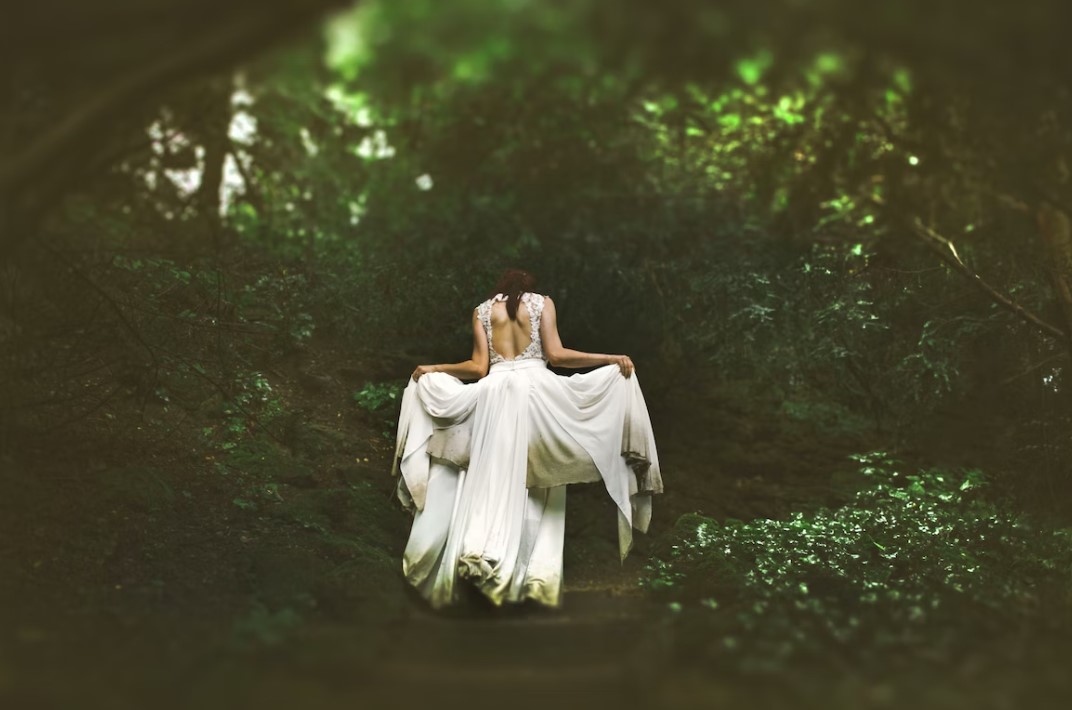The poem, ‘She Walks in beauty’ by Lord Byron, uses language in a melodic way, as if it is a song. For Byron, the woman in the poem is almost otherworldly or saintly, representing the divine beauty of the universe in corporeal form, as she fully embodies both darkness and brightness within her, yet remaining graceful and good at all times in her soul.
KEY LANGUAGE FEATURES
Alliteration
‘cloudless climes and starry skies’ – the opening imagery of the poem creates a perfect, beautiful setting for the lady; therefore, she is the idealised subject of Byron’s poem. On the surface the poem seems idealistic, however, the adjective ‘starry’ perhaps implies that there is something fated or tragic about the relationship – as traditionally in literature references to the stars convey the idea that fate watches over and predetermined people’s lives on earth – Shakespeare, for instance, calls Romeo and Juliet ‘star-crossed lovers’; we could intimate that there is something similarly ill-fated about the lovers in this poem.
Sibilance
‘So soft, so calm, yet eloquent,’ – the soft sibilant ‘s’ and fricative ‘I’ sounds in this line convey the gentleness and gracefulness of the lady’s beauty. This echoes in later lines, such as ‘Where thoughts serenely sweet express’ – the poem then begins to pick up other alliterative sounds such as ‘w’ in the phrase ‘Which waves in every raven trees’.
Antitheses
‘dark and bright’ / ‘One shade the more, one ray the less’ – these antithetical oppositions are perhaps evocative of good and evil, because darkness and light are often used in literature to symbolise this dichotomy. This creates an unsettling undertone to the poem – suggesting that the woman’s grace and calmness, her beauty and divine qualities are offset against something darker, which is equally alluring. Nevertheless, the end of the poem seems to resolve this complexity by offering a final comment on the lady: ‘days in goodness spent, / A mind at peace with all below, / A heart whose love is innocent!’ – the speaker seems to affirm several times that the lady is ultimately good, pure, innocent and peaceful.
Semantic field
The adjective ‘raven’ suggests perhaps a touch of ambiguity about the woman, as ravens typically convey a gothic atmosphere of darkness (further conveyed by the semantic field of darkness ‘dark’, ‘raven’, ‘night’, shade’) – something which initially may seem counter to the lady’s heavenly and ethereal beauty, but, the speaker asserts, her darkness in fact only enhances her appeal as she embodies the ‘best of dark and bright’ equally.
Thanks for reading! You can buy our detailed A* study guide here if you’re studying this particular poem.
This includes:
Vocabulary
Story + Summary
Speaker + Voice
Language Feature Analysis
Form + Structure Analysis
Context
Attitudes + Messages
Themes + Deeper Ideas
Key Quotations
Extra Tasks
Comprehension Exercises
Essay questions
Edexcel IGCSE ‘Relationships’ Poetry course
All our English Literature and Language courses












